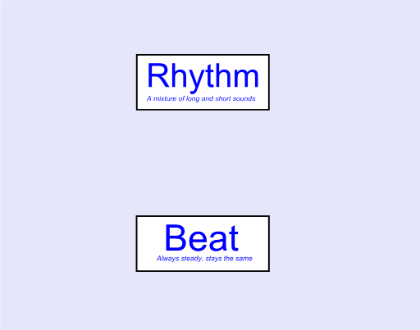Difference Between Beat and Rhythm

Music is a wide-ranging human instinct. Societies around the world have their own musical tradition and although the terminologies can be different, the general essence is same.
If you want to have a good understanding about music, you have to be aware of the difference between beat and rhythm. Most people believe that these two terminologies are the same, but there is a clear difference in them and one has to understand them before learning any form of music.
Sometimes, the beat can be a rhythm, which causes a great confusion in everyone’s mind. However, the former of the two terminologies is always constant in a composition whereas the rhythm is variable.
Instructions
-
1
Understanding beat
According to the definition, musical beat is the time being taken to play an entire piece. The Western musicians consider it as a smooth rate at which the composition of a song runs. It remains constant throughout the entire song and there is no variation whatsoever.
The person who composes the songs determines the pace of the beat and then bases the entire arrangements on it. He/she can only experiment with the beat in the initial phases of the composition, but has to run it steadily at one pace after finalising song.
It is not important for a beat to run through an entire composition. It completely depends on the musician to decide on what he/she has decided. Some of the composers decide to put the beat in the opening part of the song and then cover up the rest with other rhythmic arrangements. -
2
Understanding the rhythm
There are a few important things one must learn about rhythm. First of all, the composer can experiment with it throughout the song and make numerous musical arrangements in order to catch the attention of the audience. Although it should be variable, one must keep in mind that the continuity of rhythm is quite important while composing a song.
Let’s say you have gathered a few musical instruments and wish to compose a new song. First of all, you will have to determine the playing patterns and make all the arrangements on a paper. One by one, you should start gelling everything together in order to get a perfect blend.
Moreover, you should be able to carry the similar rhythm throughout the song in order to make it sound more consistent.






